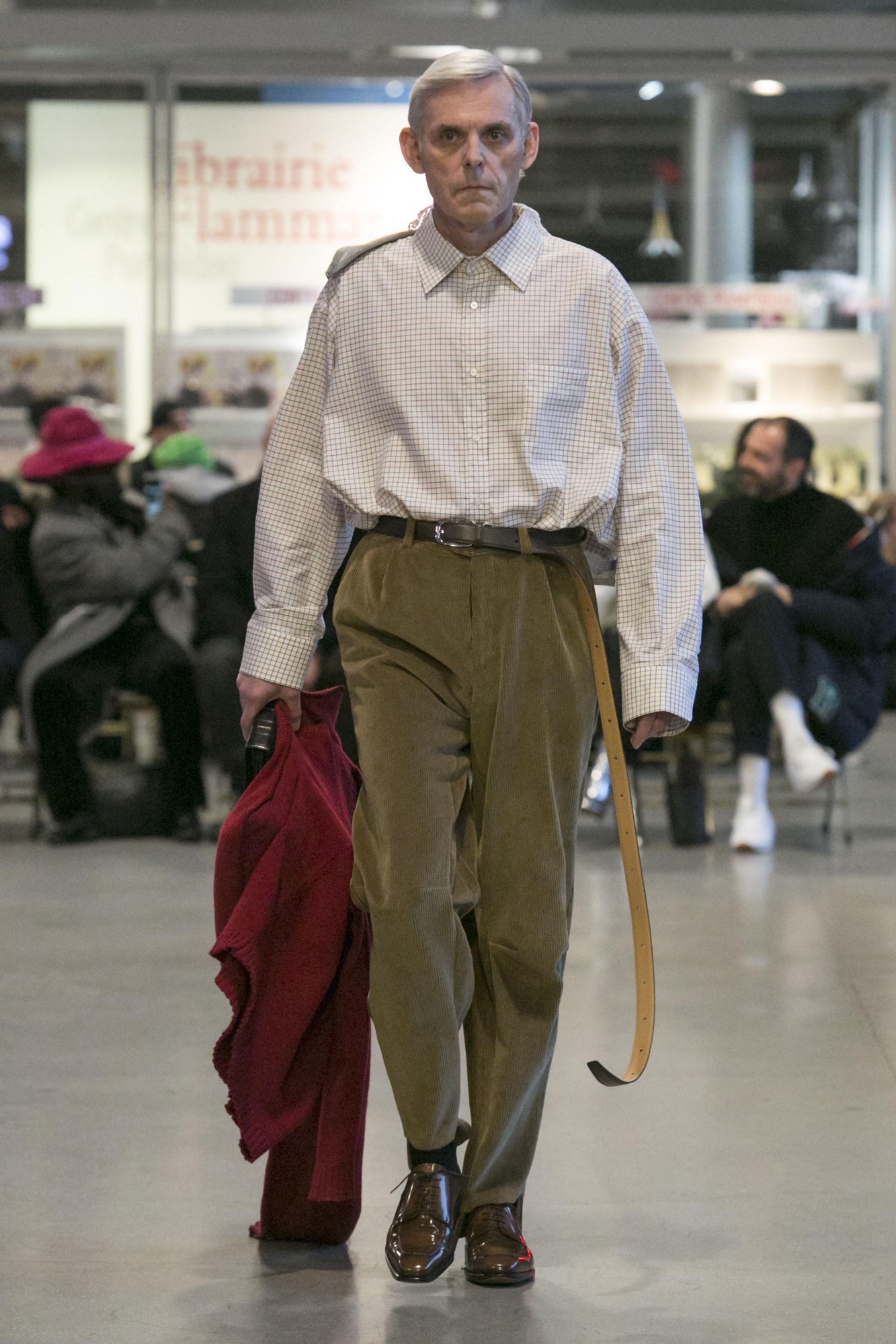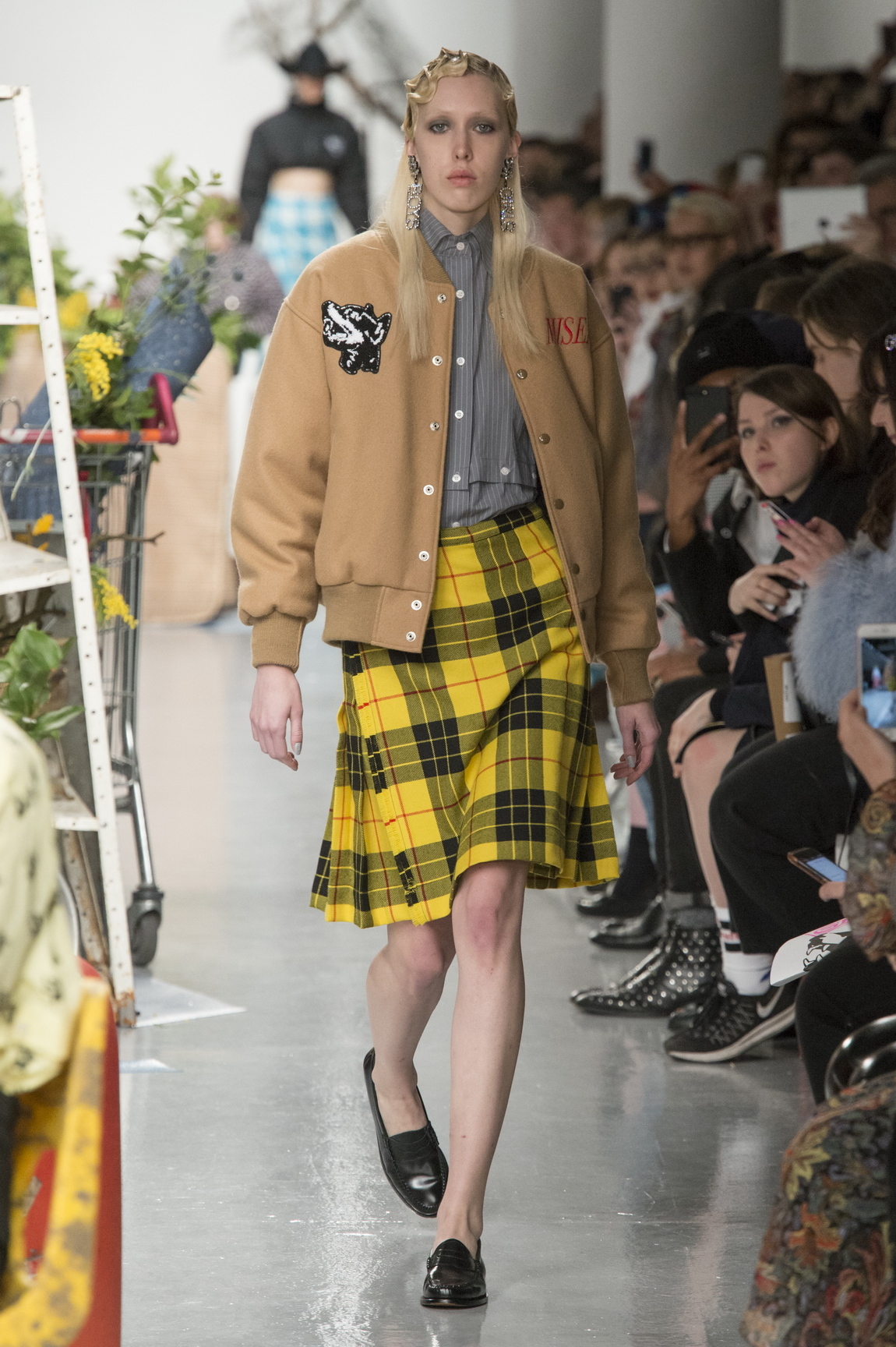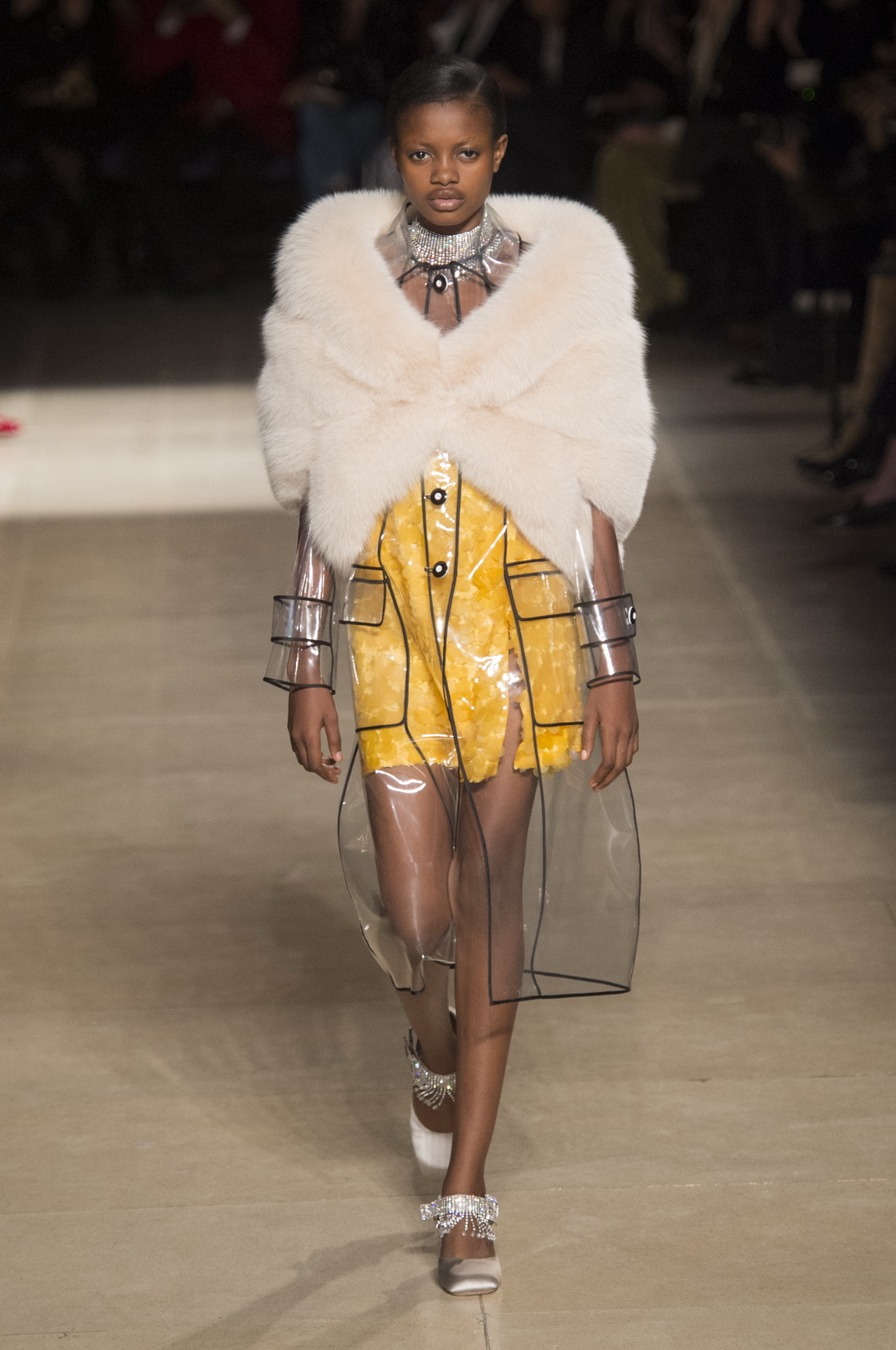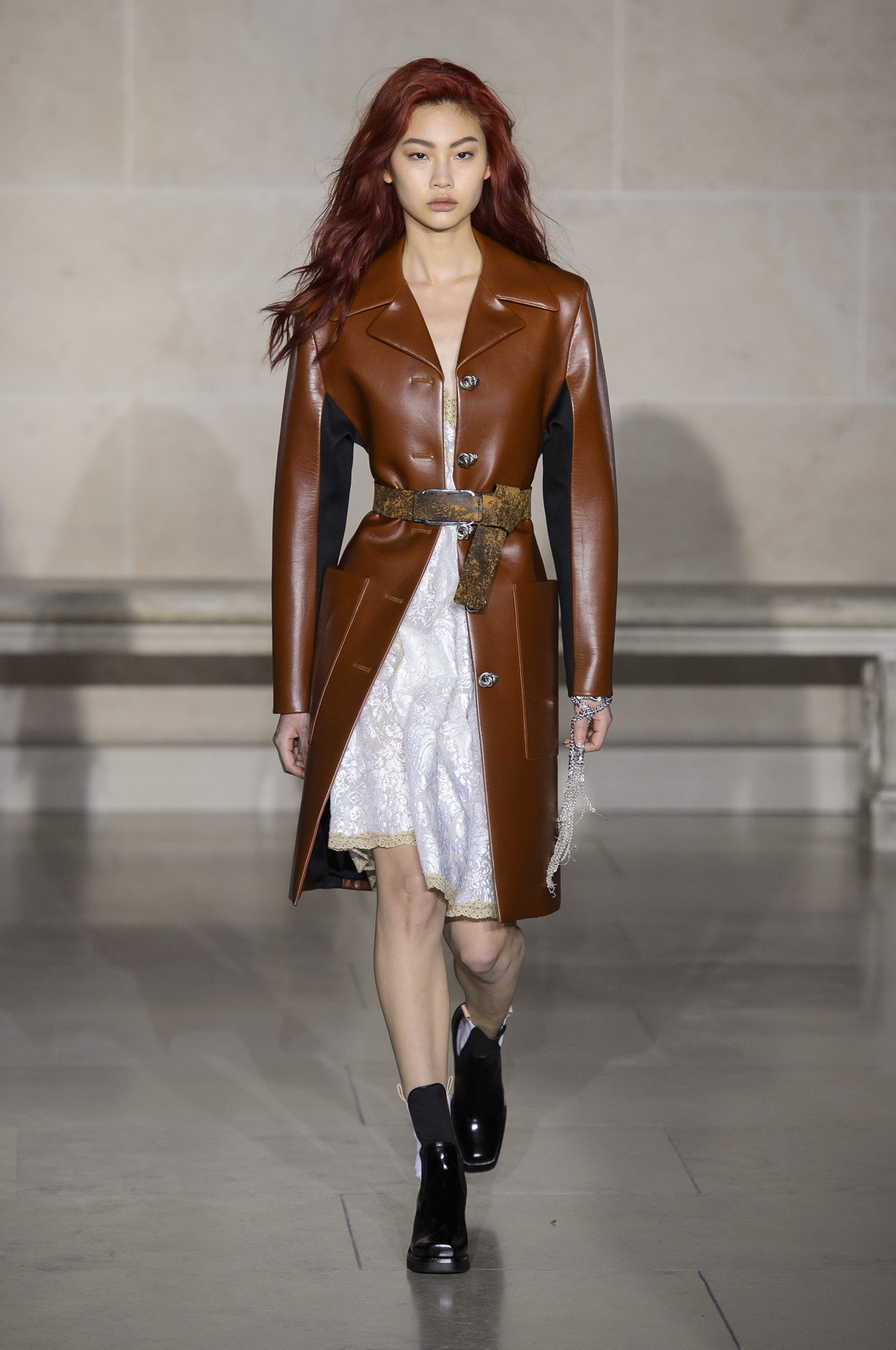Fashion is, in most ways, only shallow. But in another way, the past few seasons have tasked designers to gouge deep into the political zeitgeist – and resurface with costumes for the revolution. With the autumn/winter 17 womenswear showcases just finished, subjects of privacy breaches, glass ceilings, free markets and border controls manifested themselves in designs that confronted literal and analogous boundaries.
Showing over the couture schedule in January, Vetements prefaced this talk, and did so with new degrees of their signature realism. The Emo, the Bourgeoisie, the Rocker, the City Girl, the Donna Decaffeinato. Demna Gvasalia delineated social stereotypes taken from Ari Versluis and Ellie Uyttenbroek’s photo series Exactitudes, asking the extent to which identity can be penetrated through image alone.

Appearance as social signifier is the crux of any collection, but here it felt especially pronounced, perhaps because brands usually offer their diverse narratives (and some cultural appropriation) on a cast of thin, white girls. There was something pleasantly egalitarian about the way the models inhabited the public arena of Centre Pompidou. Each visual identity felt equally legitimised.
It’s not unexpected that New York Fashion Week was consumed with thoughts on what it is to be American. Attention was naturally drawn to Raf Simon’s Calvin Klein debut for the political overture, where he played mainly – in irony – with the limited vocabulary of Americana and Country and Western. As did Stuart Vevers at Coach – and it was seen later again in London at Ashish, House of Holland and Ashley Williams – all with whimsical caricatures of the American Dream. At Calvin Klein, cowboy silhouettes, varsity uniform and business suits were soundtracked by David Bowie’s This Is Not America. Television-dream notions of what it is to be American that deliberately critiqued the emptiness beyond.

With similarly deliberate notions of the shallow, Jeremy Scott offered a shimmering mirage of celebrity and screens for his eponymous collection in New York. Even from the auteur of American pop, this collection felt extra trivial, with slogans like, “as seen on TV” and “sex is cute” side by side with portraits of Jesus Christ, Michael Jackson and various congressmen. Celebrity and idolatry were strewn in sparkles, styled with boas, cut in the silhouettes of crass sex.
The narrative was strengthened when placed next to Scott’s designs at Moschino in Milan. The latter collection developed the idea of person as product and fashion as empty. Clothing was made from cardboard boxes, packing tape, laundry hangers, shopping bags. It paid clear homage to Franco Moschino’s satirical stagings of shopping-bag and bin-liner dresses that critiqued the industry’s shallowness in the 80s and 90s, but held its own relevance today. The superficialness of the wrappers, stamped with words like “fragile” that were only circumstantially meaningful, then moved into a series of frantic looks printed with collages of media cuttings. Words and colours and images bleared. Scott’s intent or not, it served some reminder that recent seasons, this one truly included, have too quickly capitalised on the new trendiness of political discourse via slogans. Much like when You’ll be looking at a nice ass jacket at Forever 21 and when you turn it around and it says “MONDAYS SUCK” on the back, it becomes a cheap and regrettable afterthought. What’s most problematic is that it’s often thrown into collections, stuck onto clothes that don’t exude the same progressive ideologies as the words. Slapping on a radical slogan and a beret does not make your collection radical.

That’s not to undermine much of the sincerity, consideration and feeling that led to some political discussion over the season. So much of London’s scene is identifiable by its tensions between freedom and neurosis, that overstep boundaries of “correctness”, from emerging designers at the CSM BA show and NEWGEN, to heavyweights like Christopher Kane and J.W.Anderson.
Faustine Steinmetz, pretty much denim’s main ambassador on schedule in London, spoke directly to this fabric’s universality in her notes for the collection, carefully sourced inspirations from Bogotá, Vancouver, Seattle, Tel Aviv, and wove textiles with a traditional West African loom. Denim was used so much elsewhere across the shows, with designers invoking its powers to relate people beyond borders. In diegetics of the pedestrian and the street, it was a central material in the designs of Prada, Calvin Klein, Public School and Marc Jacobs.

Plastic was another material found all over the autumn/winter 17 collections, turning thoughts to themes of privacy and protection. We are a culture confronting our anxieties and crises. At such times of cataclysm, imaginings of living in a dystopia lead to imaginings of future human forms – the turn of the millennium was another instance of this kind of intensified engagement with our future world. In a fetishistic way, thoughts of protecting or hybridising the body with second skins like leathers, rubber, PVC, plastic (in the case of Gucci’s face-covering bodysuits this season, crystals too) are sometimes rediscovered. Full black leather attire was seen at several collections, such as Calvin Klein, Alexander Wang, Preen by Thornton Bregazzi, Gareth Pugh, Proenza Schouler. And metallic leather in space-sportif shapes at Chanel, where Lagerfeld’s novelty du jour was the final frontier. But unlike leather, plastic has a synthetic, machinistic impression to it.
Balenciaga saw Demna Gvasalia turn vinyl car mats into skirts, side mirrors into clutches. The whole premise had a Ballardian quality, a melding of the human body with technology that drew attention to our current state. It was a refreshingly distanced take on hyperreality – how long has it been since our hybrid condition has been expressed through hardware instead of the seamless lines of software? And Rei Kawakubo presented “future silhouettes” at Commes des Garçons; plasticky, bubble-like membranes that enshrouded the body, with a sense of privacy, protection and distancing.

See-through plastic was found at Calvin Klein, pressing feathers, fur and other breathy textures against skin; and plastic trenches were seen at Miu Miu. The Gucci catwalk was encased in a plastic shell, with the guests looking in. In these instances, there was a vulnerability about the presentation, a voyeuristic seizing of bodies. At Calvin Klein, with some inspiration taken from Virgin Suicides, where daughters are captives of their parents’ hysteria, there was a relationship made to ideas of irrationally restricted movement at borders, of persecution, of capricious dictators. Prada, too, had this sense of vulnerability in its styling. If clothing is a protective layer in itself on the body, this had been pulled from the female form to expose. It had been seduced, it had been uncovered beyond the woman’s intention when she dressed in the morning.
It was interesting though, that there were so many direct visuals lent from the menswear autumn/winter 17 collection, from the colours and relaxed trousers to shell jewellery and corduroy and fur and denim. This gesture in itself was unusual from Miuccia, who typically stratifies gender much more precisely. The divide here seemed to be mainly in the sense of sexual vulnerability of the women’s collection, in a sense of violation and breach.

Finally, in a poetic circle from Vetements’ staging in Centre Pompidou, Louis Vuitton closed the season with a show inside the Louvre, a building so meaningfully tied to democratic access to art. It was a similar gesture, obviously taken by the power-brand with more palatable precaution, and a nice choice for a collection that explored boundarylessness.
In interview with Vogue at the show, Nicolas Ghesquière said “some people make us want to believe that the frontiers are stronger and stronger… I think fashion has always broken those frontiers. Especially in Paris – it’s the land of foreign designers; it’s so multicultural. Being in the Louvre where everyone is welcome, there is no limit of culture, of nationality”. Essentially, these were the terms of the season in its entirety. A season, an industry, so moved by the goings on beyond its bubble. That which is skin deep, perhaps, is being punctured.
Credits
Text Kinza Shenn
Photography Mitchell Sams
